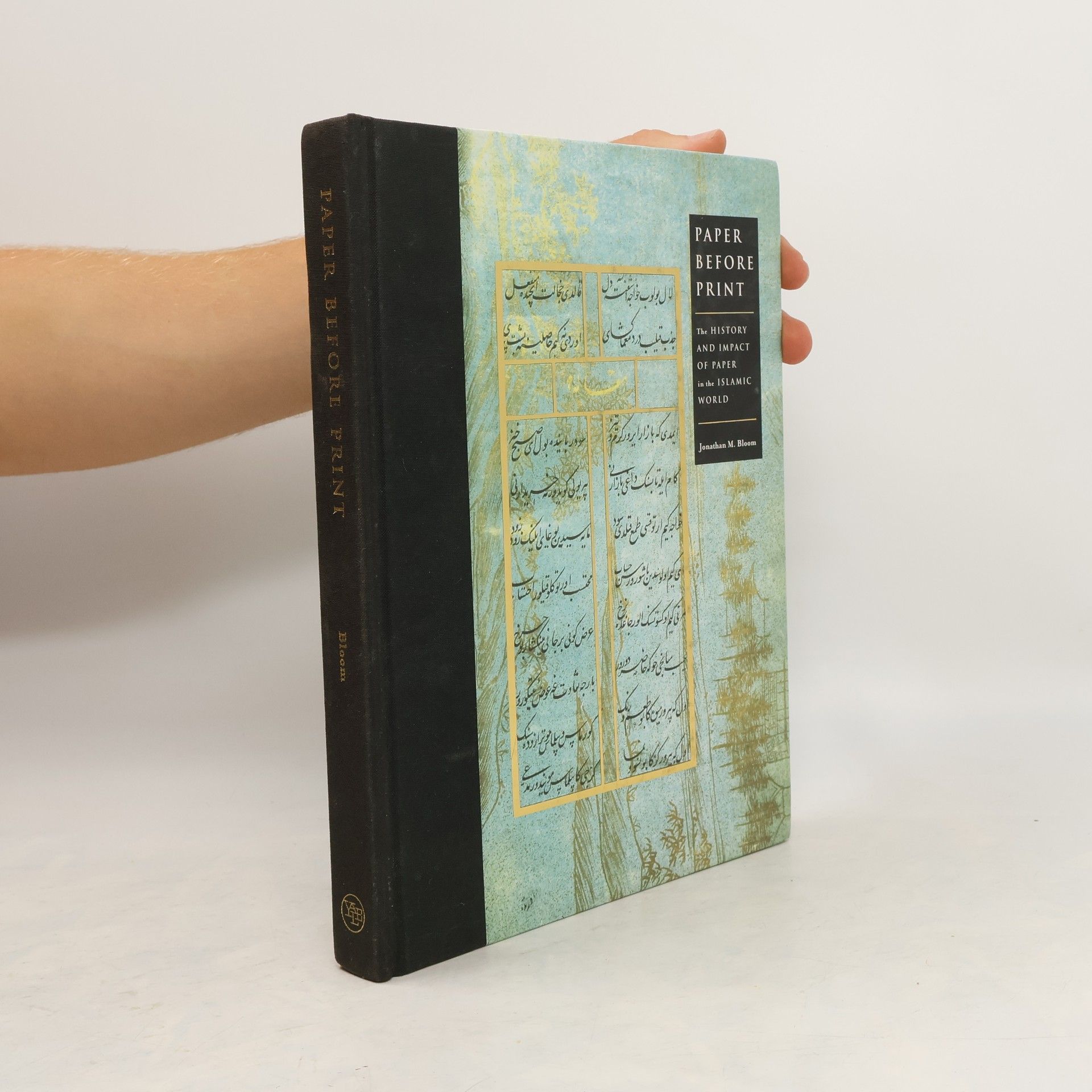Trusting Jesus is hard, especially when times are tough. Through the imaginative retelling of 35 Bible stories, this book helps us trust God's promises over our perceptions and find rest in the faithfulness of God.
Jonathan M. Bloom Livres





Paper Before Print
- 320pages
- 12 heures de lecture
Like the printing press, typewriter, and computer, paper has been a crucial agent for the dissemination of information. This engaging book presents an important new chapter in paper’s how its use in Islamic lands during the Middle Ages influenced almost every aspect of medieval life. Focusing on the spread of paper from the early eighth century, when Muslims in West Asia acquired Chinese knowledge of paper and papermaking, to five centuries later, when they transmitted this knowledge to Christians in Spain and Sicily, the book reveals how paper utterly transformed the passing of knowledge and served as a bridge between cultures.Jonathan Bloom traces the earliest history of paper―how it was invented in China over 2,000 years ago, how it entered the Islamic lands of West Asia and North Africa, and how it spread to northern Europe. He explores the impact of paper on the development of writing, books, mathematics, music, art, architecture, and even cooking. And he discusses why Europe was so quick to adopt paper from the Islamic lands and why the Islamic lands were so slow to accept printing in return. Together the beautifully written text and delightful illustrations (of papermaking techniques and the many uses to which paper was put) give new luster and importance to a now-humble material.
Islam
- 304pages
- 11 heures de lecture
An examination of the rise of Islam, the life of Muhammad, and the Islamic principles of faith. Jonathan Bloom and Sheila Blair describe the golden age of the Abbasids, the Mongol invasions, and the great Ottoman, Safavid and Mughal empires that emerged in their wake.
The Minaret
- 416pages
- 15 heures de lecture
From early Islam to the modern world, and from Iran, Egypt, Turkey and India to West and East Africa, the Yemen and Southeast Asia, this richly illustrated book is a sweeping tour of the minaret's position as the symbol of Islam.
Bogato ilustrowana i znakomicie udokumentowana książka przedstawia architekturę, sztukę książki i rzemiosło artystyczne w poszczególnych regionach świata islamu od Andaluzji i Maroka, przez Afrykę Północną, Arabię, Bliski Wschód, Turcję, Irak, Iran, kraje Azji Środkowej, po Indie Północne, od połowy XIII wieku do początków wieku XIX. Są to stulecia, w czasie których zanikała dominacja muzułmańskiej sztuki arabskiej, rozkwitała natomiast muzułmańska sztuka perska i turecka. Uwidaczniało się to w odmiennościach stylowych i zróżnicowaniach ikonograficznych, jednak z zachowaniem tradycyjnych kanonów estetycznych. Prezentowana książka jest drugą częścią historii sztuki islamu wydanej już w Polsce (Sztuka i architektura islamu 650-1250, autorstwa Richarda Ettinghausena, Olega Grabara i Marylin Jenkins- Madiny, Wydawnictwo Akademickie DIALOG, 2007). Autorzy drugiego tomu, Sheila S. Blair i Jonathan M. Bloom, opisali działania artystyczne w poszczególnych regionach świata islamu w kontekście uwarunkowań historyczno-kulturowych. Analizowaną epokę podzielili na dwa okresy – pierwszy od 1250 do 1500 roku i drugi od 1500 do 1800 roku. Rok 1250 określa w przybliżeniu początek najazdów Mongołów, a rok 1500 – początek rozwoju sztuki muzułmańskiej powstającej z jednej strony pod patronatem perskich szachów safawidzkich na rozległym obszarze Iranu i Azji Środkowej, z drugiej zaś pod patronatem tureckich sułtanów osmańskich w Anatolii, na Bliskim Wschodzie i w części krajów Afryki Północnej. Wydarzeniem zamykającym analizowaną epokę jest inwazja Napoleona na Egipt. Autorami książki jest małżeństwo amerykańskich badaczy, Sheila S. Blair oraz Jonathan M. Bloom, związani z Katedrą Sztuki Muzułmańskiej i Azjatyckiej im. Normy Jean Calderwood w Boston College, cenieni za fachowość oraz liczne opracowania naukowe i popularyzatorskie w dziedzinie architektury i sztuki islamu Specjalnością Sheili S. Blair jest sztuka muzułmańskiego Iranu i Azji Centralnej, a zwłaszcza miniaturowe malarstwo perskie w manuskryptach Szahname różnych szkół malarskich. Badaczka zajmuje się także epigrafiką, sztuką kaligrafii arabskiej oraz sztuką ornamentu w islamie. Jonathan M. Bloom wiele prac poświęcił sztuce krajów Afryki Północnej, m. in. Ifrikijji w czasach Aghlabidów oraz Egiptu za panowania Fatymidów i Mameluków. Zajmował się również rękopisami tzw. błękitnych Koranów oraz księgami Szahname, kopiowanymi w Iranie za panowania Kadżarów w XIX wieku.